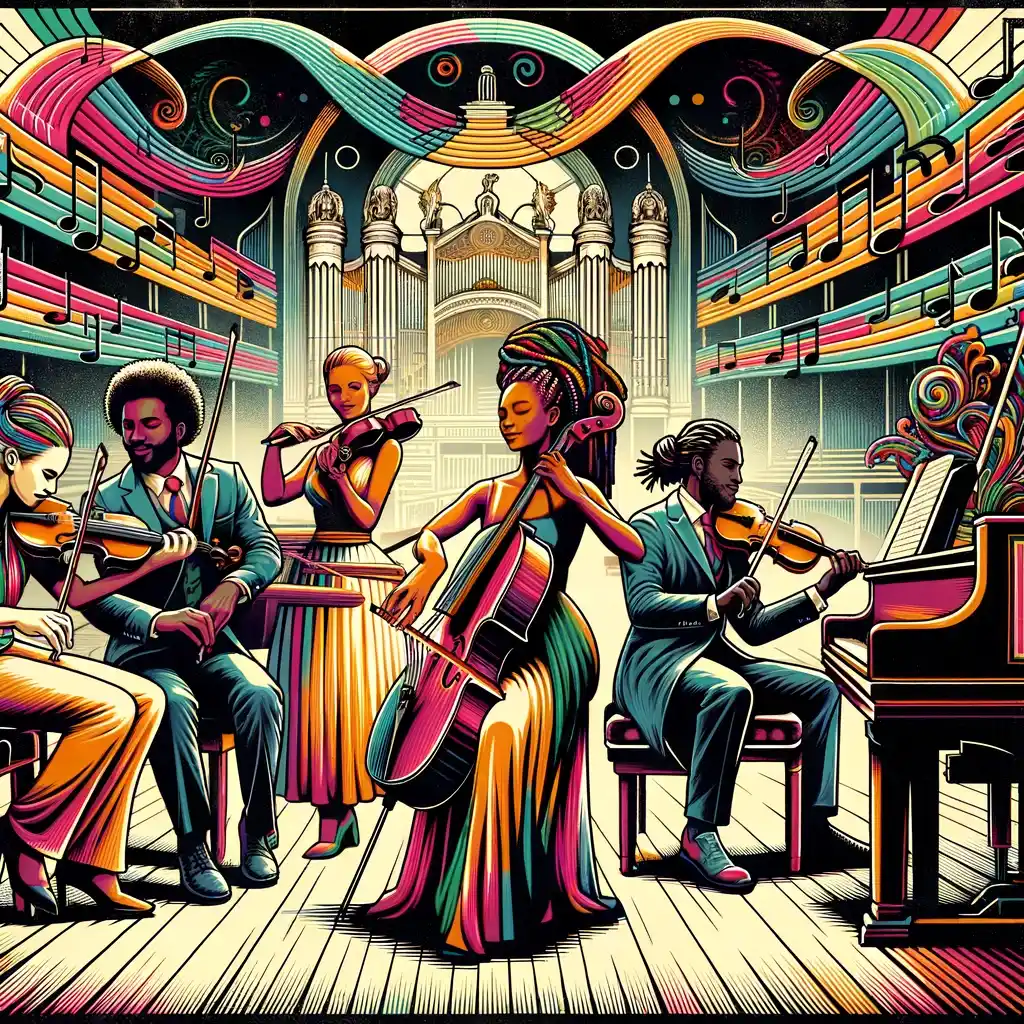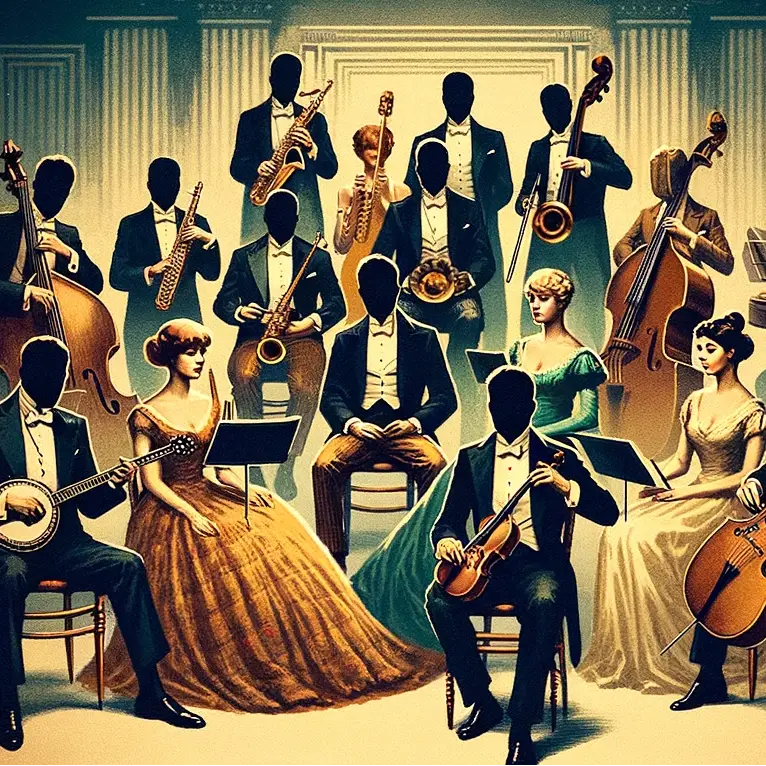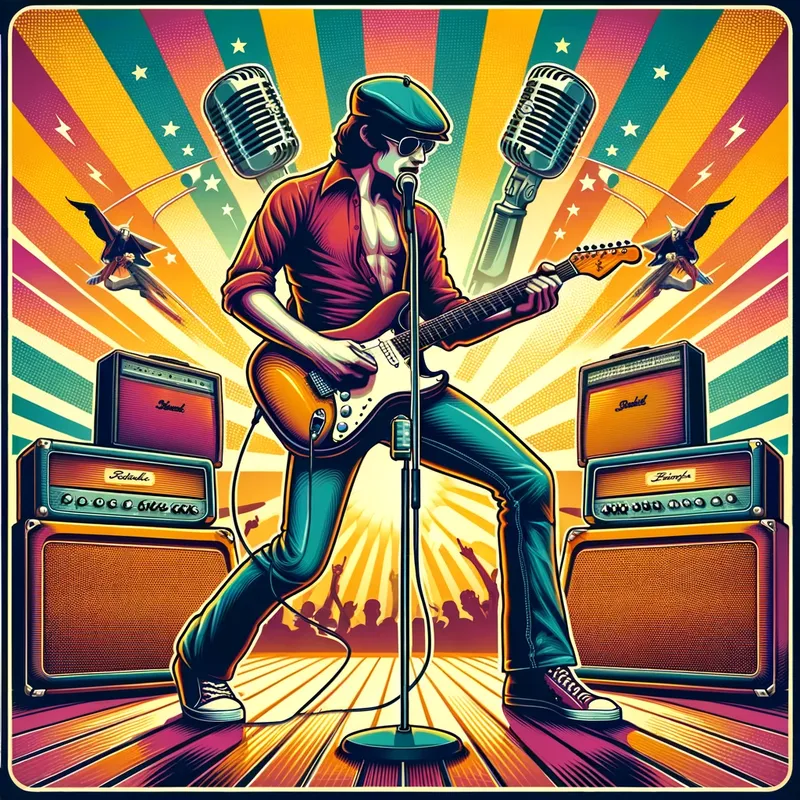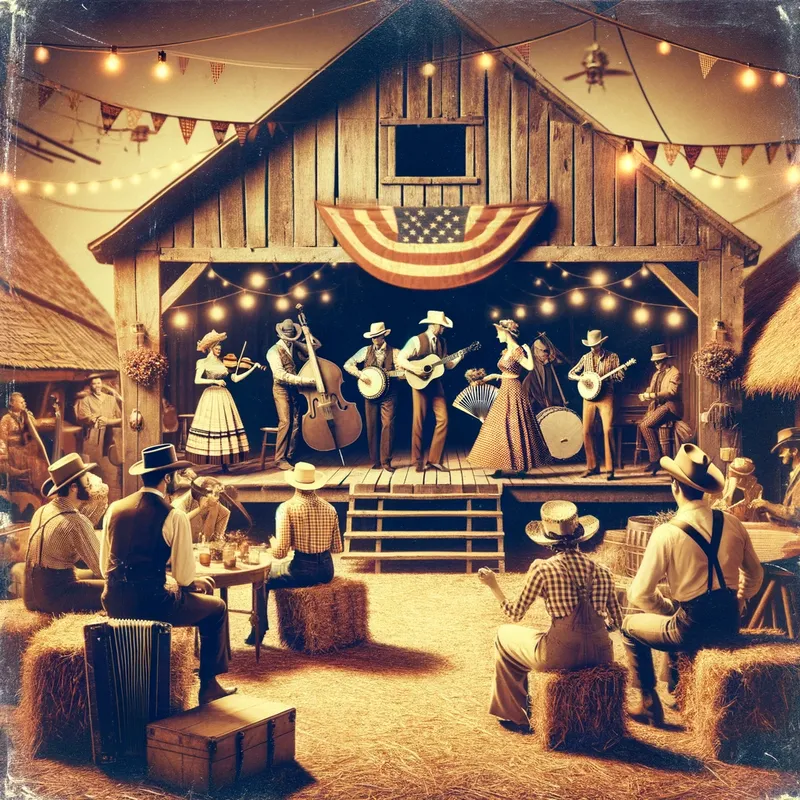Classical Music

Classical music, spanning over several centuries, is a vast and intricate genre that has been shaped by society, culture, and history.
Table of Contents
Origins and Evolution
1. Medieval Period (500-1400 AD)
The Medieval period, spanning from approximately the fall of the Roman Empire to the beginning of the Renaissance, saw the emergence of unique musical styles and forms. Though the music of this era might not be as familiar to many as the works of later periods, it laid the foundation for the subsequent development of Western music.
Characteristics and Features
- Monophonic Texture: One of the hallmarks of early Medieval music is its monophonic texture, meaning that it has a single melodic line without harmonic accompaniment. This is exemplified by the Gregorian chant.
- Modal: Unlike the major and minor scales dominant in later periods, Medieval music used modes, which are scales that differ in their patterns of half and whole steps.
- Non-Metric: Early Medieval music often lacked a strong sense of beat or meter, resulting in a free-floating, ethereal sound.
Notable Forms and Styles
- Gregorian Chant: Named after Pope Gregory I, these are monophonic, liturgical songs of the Roman Catholic Church. They’re characterized by their free rhythm and use of the church modes.
- Secular Song: As the Medieval period progressed, there was a rise in non-religious music, especially in the courts of love in southern France with the Troubadours and the northern regions with the Trouvères.
- Organum: Originating in the 9th century, this was one of the earliest attempts to create harmony in Western music. It involved adding one or more voice(s) to an existing chant, resulting in parallel motion.
- Motet: By the 13th century, the motet had emerged as a polyphonic form, with different texts being sung simultaneously in different voices.
- Ars Nova: A musical style of the 14th century, it introduced changes in rhythm and notation, paving the way for more intricate and expressive compositions.
Instruments
Though vocal music dominated, there were several instruments in use:
- Percussion: Drums, tambourines, and bells.
- Strings: Lute, harp, and fiddles.
- Wind: Flutes, recorders, and the early versions of the oboe known as shawms.
Notable Figures
- Hildegard of Bingen (1098-1179): A German abbess, visionary, and polymath, Hildegard composed many liturgical songs with rich, poetic texts.
- Léonin (c. 1150s – late 1200s) and Pérotin (fl. late 12th century): Composers associated with the Notre Dame school in Paris, they played significant roles in the development of early polyphony and the organum.
- Guillaume de Machaut (c. 1300-1377): A French poet and composer, Machaut wrote in the Ars Nova style and is known for his polyphonic setting of the Mass, the Messe de Nostre Dame.
The Medieval period laid the groundwork for what we know as Western classical music today; from the hauntingly beautiful Gregorian chants echoing in the stone chambers of monasteries to the more complex polyphonies of the later Medieval era.
2. Renaissance Period (1400-1600)
The Renaissance, which translates to “rebirth,” was a vibrant cultural movement that spanned roughly from the 1400s to the early 1600s. During this time, there was a revival of interest in the art, culture, knowledge, and discoveries of ancient Greece and Rome. In music, the Renaissance acted as a bridge between the medieval sounds rooted in church liturgy and the expressive, individualistic compositions of the Baroque era.
Characteristics of Renaissance Music
- Texture and Polyphony: The defining feature of Renaissance music was its rich texture, notably the widespread use of polyphony – where two or more independent melodies occur simultaneously.
- Word Painting: Composers began to use musical motifs to represent the lyrics or the emotional tone of the text. This technique, called “madrigalism,” was particularly evident in secular compositions known as madrigals.
- Rhythmic Freedom: Rhythms became more fluid compared to the rigid, more predictable patterns of the Medieval era.
- Harmony: There was an increased use of thirds and sixths, creating a warmer and more resonant sound than the stark fifths and octaves of the previous era.
- Secular and Sacred Balance: While religious music was still dominant, secular music gained significant traction. Composers wrote in a wide range of themes, from the spiritual to the everyday, and even the comedic.
Notable Forms and Developments
- Motet: Originally a sacred form in the Medieval period, the Renaissance motet was a polyphonic choral work set to a sacred Latin text.
- Mass: A form of sacred musical composition that sets texts of the Eucharistic liturgy into music.
- Madrigal: A secular vocal music composition, usually set to poetic texts, often about love. It became particularly popular in Italy and later in England.
- Chanson: A French song that could be either secular or sacred, but was often about chivalry or love.
- Printing and Distribution: The invention of the printing press around 1450 was revolutionary for music. For the first time, sheet music could be reproduced en masse, leading to wider distribution and standardization of musical forms and styles.
Prominent Composers
- Josquin des Prez: Often considered the central figure of the Renaissance period, his compositions demonstrated a mastery of melodic lines and deep emotional expression.
- Giovanni Pierluigi da Palestrina: Known for his pristine polyphony, he’s best remembered for his sacred music, which was said to have “saved” polyphonic choral music during the Counter-Reformation.
- Thomas Tallis: An influential English composer known for his choral music, particularly his motets and anthems.
- William Byrd: A student of Tallis, Byrd made significant contributions to every musical genre of his time, both sacred and secular.
- Orlando di Lasso: A prolific composer, he wrote over 2,000 works in all Latin, French, Italian, and German vocal genres of his time.
The Renaissance era in music marked a significant shift towards individual expression while retaining the sacred traditions of the past.
3. Baroque Period (1600-1750)
The Baroque era, spanning from approximately 1600 to 1750, marked a period of great exploration, experimentation, and expressivity. This era brought many innovations and new musical forms to the music.
Stylistic Characteristics
- Contrast: One of the defining features of Baroque music is the use of contrast. This could be found in the contrast between loud and soft, solo and ensemble, or different instruments and timbres.
- Expressive Melodies: Melodies in the Baroque era were often ornate and decorated with embellishments and trills.
- Basso Continuo: This refers to the continuous bass line that runs throughout many Baroque pieces, accompanied by instruments like the harpsichord or the lute to fill in the harmonies.
- Dramatic Elements: The Baroque era embraced the dramatic in music, especially in operatic works where the music sought to amplify the emotional content of the text.
- Complex Harmonies: The era saw the emergence and codification of tonality, which would go on to dominate Western music for centuries. This shift to major-minor tonality provided rich harmonic language and progressions.
Notable Forms and Genres
- Opera: A combination of music, theater, and dance, opera was a significant innovation of the Baroque era. Early Baroque opera originated in Italy, with Claudio Monteverdi being a pioneer.
- Oratorio: A large-scale musical composition for orchestra, choir, and soloists, based on a religious theme. Handel’s “Messiah” is a quintessential example.
- Cantata: A vocal composition with instrumental accompaniment, typically with multiple movements.
- Concerto and Concerto Grosso: A form where a solo instrument (or group of instruments in the case of the Concerto Grosso) is contrasted with an orchestral ensemble. Antonio Vivaldi’s “The Four Seasons” is a prime example of Baroque concerto.
- Fugue: A contrapuntal composition technique in which a short melody is introduced by one part and successively taken up by others and developed by interweaving the parts.
- Suite: A set of instrumental compositions intended to be performed together.
Prominent Composers
- Johann Sebastian Bach: A German composer and musician, Bach’s works (like the “Brandenburg Concertos” or the “St. Matthew Passion”) are epitomes of Baroque artistry.
- George Frideric Handel: Known for his operas, oratorios, and anthems, his most famous work is perhaps the “Messiah” oratorio with its renowned “Hallelujah” chorus.
- Antonio Vivaldi: An Italian composer best known for “The Four Seasons,” a set of violin concertos.
- Claudio Monteverdi: Often regarded as the father of opera, his “L’Orfeo” is one of the earliest works that is still regularly performed.
- Henry Purcell: An English composer known for his innovative and uniquely English form of Baroque music, with notable works like “Dido and Aeneas.”
Cultural Impact and Context
The Baroque period was a time of great change and innovation in many fields, not just music. Scientific exploration, global colonization, and artistic innovation in areas like painting and architecture paralleled the developments in music. The grandeur of Baroque art reflected the social changes of the era, including challenges to authority in matters of religion, science, and politics.
The Baroque era laid the groundwork for many of the classical forms and structures that followed in subsequent periods. Its influence can still be felt today, as its compositions continue to be widely performed and celebrated around the world.
4. Classical Period (1750-1820)
The Classical Period, spanning from 1750 to 1820, was a time of significant transition and evolution in Western art music. Breaking away from the complexities and ornate nature of the Baroque, music from the Classical era emphasized clarity, order, and balance.
Key Characteristics:
- Form and Structure: One of the defining traits of Classical music is its commitment to form. Sonatas, symphonies, string quartets, and operas from this era show a strong sense of structure and development. Standard forms, such as sonata-allegro, became popular.
- Harmony and Melody: The harmonic language was refined, and tonality became firmly established. The melodies were tuneful and easy to remember, contrasting the often complex melodic lines of the Baroque.
- Texture: While Baroque music was often polyphonic (multiple independent melodic lines), Classical music generally leaned towards homophony (a primary melody supported by chords).
- Dynamics: There was a greater emphasis on dynamic contrast. The piano (fortepiano) gradually replaced the harpsichord, partly due to its ability to vary volume based on touch.
- Orchestration: The Classical orchestra grew in size and range. The standard orchestra came to consist of strings (violins, violas, cellos, and double basses), woodwinds (flutes, oboes, clarinets, bassoons), brass (horns, trumpets), and timpani.
Notable Composers and Their Works:
- Wolfgang Amadeus Mozart (1756-1791): A prodigy, Mozart contributed to every genre of his day. His operas like “The Marriage of Figaro” and “Don Giovanni” are staples. His symphonies, sonatas, and Requiem are also revered.
- Franz Joseph Haydn (1732-1809): Known as the “Father of the Symphony” and “Father of the String Quartet,” Haydn was a pivotal figure in the Classical era. His “Surprise Symphony” and the oratorio “The Creation” are among his most notable works.
- Ludwig van Beethoven (1770-1827): Beethoven, while rooted in the Classical tradition, is also seen as a bridge to the Romantic period. His nine symphonies, especially the iconic “Fifth Symphony,” are groundbreaking. His piano sonatas, like the “Moonlight Sonata,” and string quartets are also influential.
- Christoph Willibald Gluck (1714-1787): Gluck is known for his operatic reforms, emphasizing the drama’s integrity. Works like “Orfeo ed Euridice” showcase his new approach to opera.
Cultural Context:
The Classical period coincided with the Age of Enlightenment, a movement emphasizing logic, reason, and individualism. This is reflected in the period’s music, which is structured and balanced yet allows for individual expression.
Innovations:
- Opera: While opera existed in the Baroque, the Classical era saw the rise of the Singspiel (German) and opera buffa (Italian), lighter, comic operas that contrasted with the more serious opera seria.
- Chamber Music: The string quartet became a prevalent medium for chamber music, providing composers a venue to experiment and express their most intimate thoughts.
- Piano: The fortepiano evolved during this period, eventually leading to the modern piano. It quickly became a favored instrument for solo and chamber music.
5. Romantic Period (1820-1900)
The Romantic era in classical music spanned roughly from 1820 to 1900. It was a time of great emotional and expressive depth, with composers emphasizing individualism, emotion, and nationalism in their works. The period came as a reaction against the perceived strictures of the Classical era and sought to expand the potential of musical expression.
1. Key Characteristics:
- Emotional Depth: Romantic music is often characterized by its emotional intensity. Compositions might evoke feelings of longing, passion, sorrow, or excitement more fervently than ever before.
- Programmatic Elements: Many works, especially symphonic ones, were programmatic, meaning they were meant to evoke specific images, stories, or scenes, often detailed in written programs.
- Expanded Orchestra: The size and range of the orchestra grew, with an emphasis on lush and varied timbres. New instruments were added, and the brass and woodwind sections, in particular, expanded.
- Nationalism: Many composers incorporated folk tunes, rhythms, and themes from their native countries into their works, leading to distinct national musical styles.
- Freedom in Form and Design: While forms such as the sonata and symphony continued to be used, they were expanded, modified, or sometimes abandoned for freer structures.
2. Notable Composers and Their Works:
- Ludwig van Beethoven: Though Beethoven’s earlier works are Classical, his later compositions, like the late string quartets and the Ninth Symphony, paved the way for the Romantic era.
- Franz Schubert: Known for his Lieder (German art songs), as well as symphonies and chamber music. Works include “Erlkönig” and “Symphony No. 9.”
- Johannes Brahms: A guardian of classical form, yet imbued his compositions with deep emotion. Notable works include his symphonies and “A German Requiem.”
- Pyotr Ilyich Tchaikovsky: Russian composer known for ballets like “Swan Lake” and “The Nutcracker,” and the “1812 Overture.”
- Frederic Chopin: Primarily a composer for the piano, he created intricate works filled with nuance and feeling, like his nocturnes and ballades.
- Richard Wagner: Revolutionized opera with his concept of the “Gesamtkunstwerk” (total artwork). Famous works include “The Ring Cycle” and “Tristan und Isolde.”
- Giuseppe Verdi: Italian opera composer known for works like “La Traviata,” “Aida,” and “Rigoletto.”
3. Innovations and Trends:
- Opera and Drama: Wagner’s music dramas and Verdi’s operas introduced new depth and innovation to the genre.
- Symphonic Poem: Composers like Franz Liszt introduced the symphonic poem, a single-movement orchestral work that portrayed a narrative or sequence of emotions.
- Character Piece: Short piano pieces which captured a specific mood or character, often with evocative titles, became popular.
- Choral Works: Large scale choral and orchestral pieces, like oratorios and masses, were created, sometimes with nationalistic themes.
The Romantic era brought an emotional depth to the world of classical music, expanded both musical forms and the very instruments of the orchestra, and emphasized individualism and national identity.
While it retained roots in the structures and forms of the Classical period, it sought to push the boundaries of musical expression, leading to a rich tapestry of works that continue to resonate with audiences today.
6. Classical Music in the 20th & 21st Centuries
The 20th and 21st centuries have witnessed some of the most transformative and experimental periods in classical music. During these times, composers sought to break away from the traditional structures and harmonies of the past, embracing new techniques, instruments, and ideas.
Characteristics and Trends
- Atonality: Composers started to experiment with music that didn’t revolve around a central key or tonal center. This departure led to more dissonant and challenging works.
- Extended Techniques: Musicians started using their instruments in unconventional ways, such as striking a piano’s strings directly or using “prepared” instruments with objects placed between or on the strings.
- Electronic Music: The advent of technology enabled the inclusion of synthesized sounds and the manipulation of recorded sounds. This led to a blend of electronic and acoustic elements in compositions.
- Minimalism: Characterized by repetitive motifs and steady pulse. Minimalism aimed to strip down music to its most fundamental features.
- Cross-Cultural Influences: With globalization, composers started incorporating elements from world music, blending Western classical traditions with those from Africa, Asia, and other regions.
- Film Scores: The rise of cinema gave classical music a new platform. Some of the most memorable music from this era comes from film scores.
Key Composers and Works
- Igor Stravinsky: Known for “The Rite of Spring,” a ballet that caused a riot at its premiere due to its revolutionary sound.
- Arnold Schoenberg: Developed the twelve-tone technique, ensuring that all 12 notes of the chromatic scale are treated as equals. Works include “Pierrot Lunaire.”
- John Cage: Pushed boundaries of what could be considered music. Famous for “4’33”,” a piece in which the performer doesn’t play their instrument.
- Philip Glass: A leading minimalist composer known for operas like “Einstein on the Beach” and film scores such as “Koyaanisqatsi.”
- Steve Reich: Another pioneer of minimalism, notable for “Music for 18 Musicians.”
- John Williams: Renowned for his film scores, including those for “Star Wars,” “Jurassic Park,” and “Harry Potter.”
- Kaija Saariaho: A Finnish composer of the 21st century known for combining live music with electronics.
- Thomas Adès: An influential British composer and conductor whose works span various styles.
Contemporary Developments in the 21st Century
The 21st century continues to see a blurring of boundaries. Composers today often merge classical techniques with pop, jazz, and electronic music. The increasing accessibility of music software has democratized music production, allowing for more experimental works from diverse voices.
Notable Classical Music Forms
- Symphony: A large-scale orchestral work, typically in four movements.
- Opera: A theatrical form where the story is sung and accompanied by an orchestra.
- Sonata: A composition for a solo instrument.
- Chamber Music: Intimate compositions for a small group of instruments, e.g., string quartet.
- Concerto: Features a solo instrument with orchestral accompaniment.
Cultural and Social Impact
- Sacred Spaces: For centuries, classical music has been tied to religious ceremonies and spaces, from Gregorian chants in cathedrals to Johann Sebastian Bach’s sacred cantatas.
- Royal Courts: Classical music was a significant part of courtly entertainment, with monarchs and nobles patronizing composers and musicians.
- Concert Halls: With the growth of the bourgeoisie in the 18th and 19th centuries, music became more public with the rise of concert halls and public performances.
- Education: Today, classical music forms the backbone of music education, teaching foundational principles of melody, harmony, and form.


